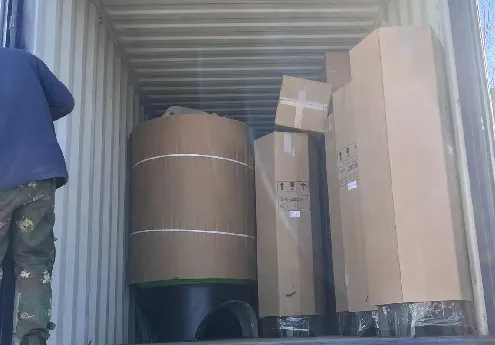loading...
- No. 9, Xingyuan South Street, Dongwaihuan Road, Zaoqiang County, Hengshui, Hebei, China
- admin@zjcomposites.com
- +86 15097380338
- Welcome to visit our website!
frp pressure vessels
FRP Pressure Vessels A Comprehensive Overview
Fiber-Reinforced Plastic (FRP) pressure vessels have gained significant attention in various industries due to their unique properties, including high strength-to-weight ratios, corrosion resistance, and enhanced durability. These vessels are essential in applications involving the storage and transportation of gases and liquids under pressure. This article explores the characteristics, advantages, manufacturing processes, and applications of FRP pressure vessels.
Characteristics of FRP Pressure Vessels
FRP pressure vessels are constructed using a matrix of resin reinforced with fibers, typically glass, carbon, or aramid. The choice of reinforcement material depends on the specific requirements of the application. The main characteristics that distinguish FRP pressure vessels from traditional materials like steel and aluminum are
1. Lightweight FRP pressure vessels are significantly lighter than metal vessels, making them easier to handle, transport, and install.
2. Corrosion Resistance One of the standout features of FRP is its ability to resist corrosion in harsh environments. This property makes FRP pressure vessels ideal for chemical storage, where contact with corrosive substances is a concern.
3. High Strength The composite materials provide excellent strength even at high pressures, making FRP vessels suitable for demanding applications.
4. Thermal Insulation FRP has good thermal insulative properties, reducing heat transfer and maintaining the temperature of the contents.
Advantages of Using FRP Pressure Vessels
The use of FRP pressure vessels offers several advantages over traditional materials
- Cost-Effectiveness Although the initial investment might be higher, the durability and low maintenance requirements of FRP vessels can lead to lower life cycle costs
.- Design Flexibility FRP can be molded into various complex shapes and sizes, offering greater design versatility to meet specific application needs.
frp pressure vessels

- Reduced Maintenance Due to their inherent resistance to corrosion and chemical effects, FRP vessels require less maintenance compared to their metal counterparts.
Manufacturing Processes
The manufacturing of FRP pressure vessels typically involves several key steps
1. Material Preparation The selection of resin and reinforcement fibers is critical, as these will determine the final properties of the vessel. Common resins include polyester, vinyl ester, and epoxy.
2. Lay-Up Process The fibrous reinforcement is layered and combined with the resin to form the vessel. Techniques such as hand lay-up, vacuum bagging, or filament winding are commonly used.
3. Curing The resin is allowed to cure, which is a chemical reaction that solidifies the composite material. This process can be accelerated using heat.
4. Testing Quality assurance is crucial. FRP pressure vessels undergo rigorous testing, including hydrostatic tests, to ensure they can withstand specified pressures and comply with safety standards.
Applications of FRP Pressure Vessels
FRP pressure vessels are versatile and find applications across various sectors, including
- Chemical Industry Used for storing chemicals, acids, and other corrosive substances. - Pharmaceuticals Ideal for processes requiring stringent hygiene and non-reactivity standards. - Oil and Gas Employed for transporting gases and liquids under high pressure. - Water Treatment Utilized in water filtration systems and as pressure vessels in reverse osmosis plants.
Conclusion
FRP pressure vessels are a remarkable advancement in materials engineering, providing a solution that addresses many of the limitations associated with traditional metal pressure vessels. Their lightweight, corrosion-resistant, and high-strength characteristics make them invaluable in various industries. As technology advances and the demand for efficient and durable pressure vessels grows, FRP will likely play an increasingly important role in the future of manufacturing and storage solutions.
-
GRP Structures: The Future of Lightweight, High-Performance EngineeringNewsJun.20,2025
-
FRP Water Tank: High-Performance Storage for Corrosive and Clean Water SystemsNewsJun.20,2025
-
FRP Square Tube: The New Industry Standard for Chemical and Structural ApplicationsNewsJun.20,2025
-
FRP Pultruded Profiles: The Ultimate Choice for Lightweight Structural StrengthNewsJun.20,2025
-
FRP Handrails: The Safer, Smarter, and Stronger Choice for Modern InfrastructureNewsJun.20,2025
-
FRP Grating: The Smart Solution for Durable, Lightweight Industrial FlooringNewsJun.20,2025
-
Why Choose a Galvanized Water Tank for Your Storage NeedsNewsMay.21,2025
